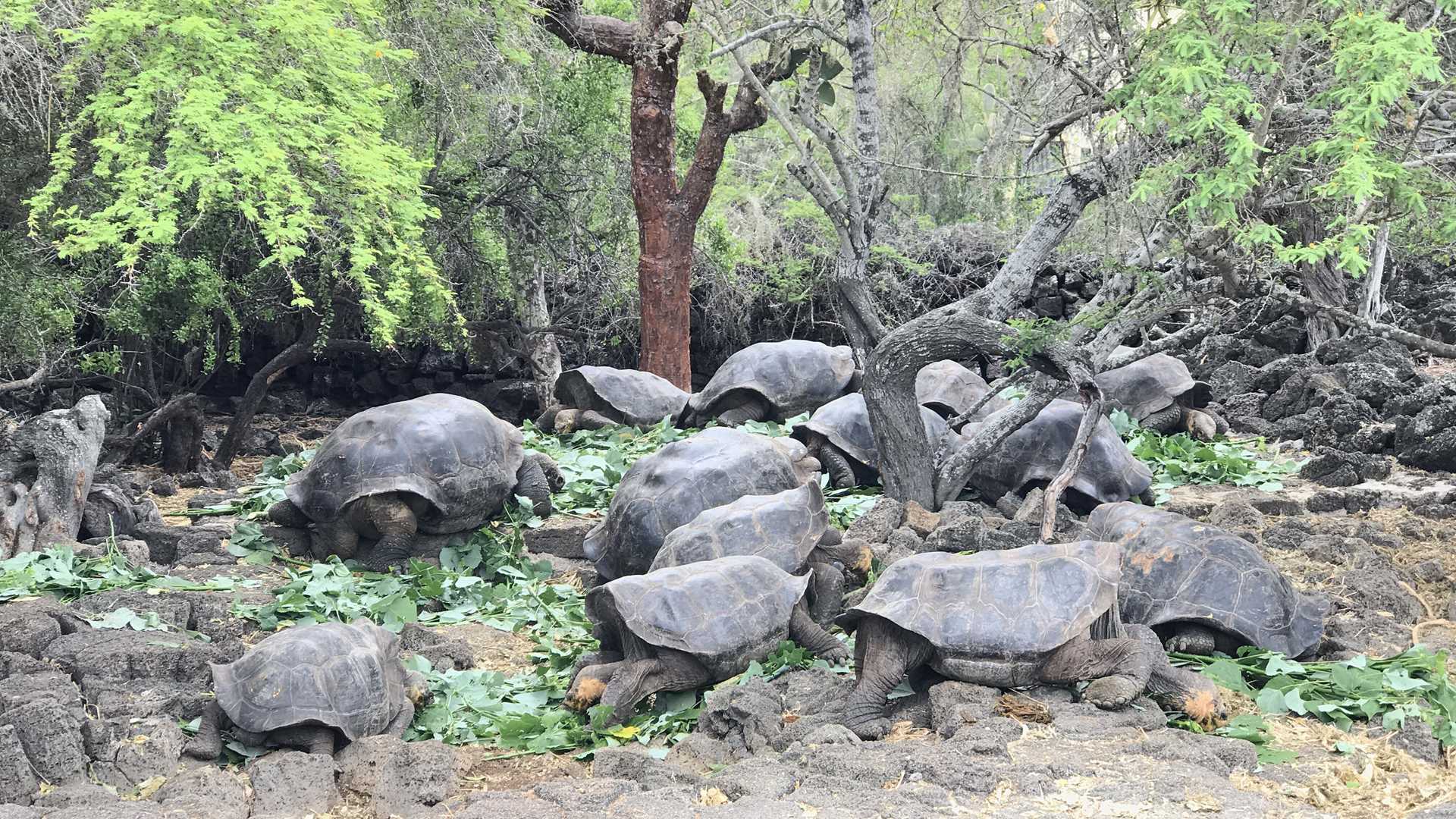Today we spent – in civilization! Puerto Ayora is home for 20,000 Galapageans, is the largest town in the archipelago and is the home base for both the National Park and the Charles Darwin Research Station. We visited the Darwin Station and the tortoise breeding center that is run by the National Park. We saw the famous Lonesome George (embalmed!) who was the last pure Pinta Island tortoise and who died several years ago of old age without reproducing. We visited the highlands, explored a lava tunnel, and learned about coffee and sugar cane production. We had a bountiful lunch and spent an hour walking among wild tortoises, which- like all the rest of the wildlife here in Galapagos – ignored us and went about their slow, deliberate lives while we took photos of them from all angles and heights.
- Daily Expedition Reports
- 14 Mar 2018
Santa Cruz Island, 3/14/2018, National Geographic Islander
- Aboard the National Geographic Islander
- Galápagos
Lynn Fowler, Expedition Leader
Born in Baltimore, Maryland, and one of seven children, Lynn grew up in various university towns where her father was a professor of physics. Lynn obtained her B.A. in biology from Earlham College in Richmond, Indiana, followed by a master’s degree i...
Read MoreWalter Perez, Naturalist/Certified Photo Instructor
Walter was born in a very small town on the mainland of Ecuador. His first trip to the Galápagos was when he was 12 years old, visiting friends and aunt, who had moved to the islands. From the first moment he saw the Islands, he fell in love with the...
Read MoreShare Report
Related Reports
11/23/2022
Read
National Geographic Islander II
Isabela and Fernandina
Our day began with the chance to point out a lot of interesting geological features as we enjoyed Zodiac tours along a massive flank of Ecuador Volcano on Punta Vicente Roca. In the afternoon, we took a sunny walk on Punta Espinoza on Fernandina Island. We spotted many iguanas, and a bunch of sea lions hanging around, too.
11/22/2022
Read
National Geographic Islander II
North Seymour & Rabida Islands
Relatively small and low compared to neighboring Santa Cruz, North Seymour is located to the north of Baltra. The island is dry with predominantly low shrubs, like prickly pear cacti. The incense trees are bare during the dry season. Seabirds like frigatebirds and blue-footed boobies nest on the island, and sea lions rest on the sand when they are not fishing. Land and marine iguanas also live here. Rabida is in the middle of the archipelago and has a striking red sand beach. We observed a small colony of sea lions of all ages resting or nursing. Behind the beach, American flamingos nest in a brackish lagoon. This island is full of contrasts and wildlife that we enjoyed observing during this day of expedition.









